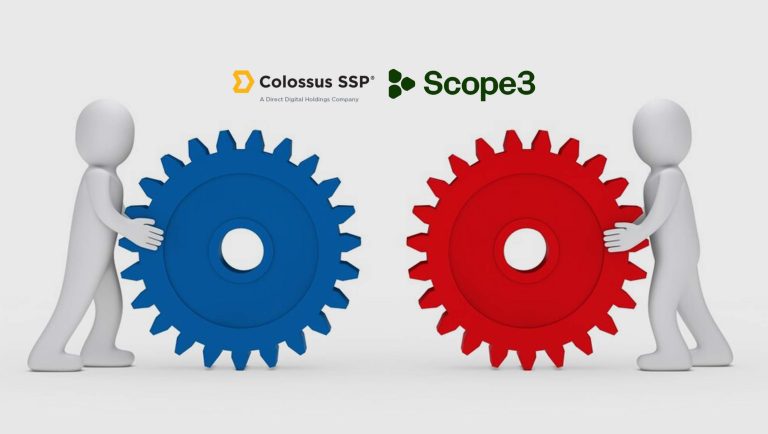AI-driven sales can solve many problems for companies failing to cope with the COVID-19 uncertainties. Heading into Q4, businesses face continued upheaval as a result of the pandemic, which has completely shifted the way they operate and increased the urgency to improve reporting accuracy and boost agility in decision-making.
Nowhere is this urgency felt more acutely than in the sales department, where reps are directly responsible for driving revenue and, in turn, keeping the business afloat. However, sales organizations today are struggling to meet the challenges presented by global economic upheaval using arcane forecasting strategies that keep them guessing about the health of their business.
As companies navigate continued uncertainty, sales leaders must be equipped with technology that cuts through inconsistencies and inefficiencies in the forecasting process and paints a precise picture of how their sales organization is performing on a macro and individual level.
Sales leaders can meet the moment by weaving AI-driven forecasting tools into their tech stack. Leveraging predictive data capabilities is vital for making faster, better-informed decisions and securing overall business health in a time when every dime counts.
Also Read: 360insights Announces Acquisition of CR Worldwide
The Problem: Inaccurate Forecasts Rooted in Poor Data, Inconsistencies and Low Visibility
Sales forecasts have always fallen notoriously off the mark. According to a recent Gartner report, 55 percent of sales leaders do not have high confidence in their forecasting accuracy. Meanwhile, CSO Insights states that 67 percent of organizations lack a formalized approach to forecasting altogether.
This issue is rooted in three key problems that are common across sales organizations:
- Sales process execution is inconsistent across teams — everyone has their own methods and their own ideas of how likely their deals are to close.
- Data quality is poor because CRM systems and spreadsheets are rarely updated — leaving managers to chase down reps to get information.
- As a result, there’s a total lack of pipeline and forecast visibility among sales leaders.
This is problematic under normal circumstances, but forecasting inaccuracy is especially detrimental in today’s fragile economic climate, where the consequences of predicting a number incorrectly are more severe than ever before. There is simply no room for error: falling short of an expected sales target can put the business directly at risk.
On the flip side, hitting the target opens up opportunities for future growth; a goal all businesses are striving to achieve right now. Getting there requires a shift away from gut-level instinct and towards objective, data-driven insights.
The Solution: Adopt Sophisticated AI-Driven Sales Forecasting Tools
AI is the key to closing that dreaded disparity between forecasts and actuals. By leveraging AI-driven forecasting tools, sales leaders can effectively remove the guesswork and provide accurate, real-time insights into how the sales organization is performing, while revealing potential gaps before they impact revenue.
An effective forecasting solution uses advanced artificial intelligence and machine learning capabilities — grounded in strong data — to automate and systematize the sales forecasting process.
Specifically, companies should seek out tools that can accomplish the following:
- Provide sales leaders with an up-to-date health score for each of their team’s opportunities, across every stage of the sales cycle.
- Evaluate each deal’s likelihood of closing based on real-time data insights.
- Enable finance teams to model various scenarios for sales commission payouts ahead of time.
This approach affords leaders greater confidence in their numbers, which ultimately drives better visibility and alignment across the business. Not to mention, it can improve sales performance: high-performing sales teams are 1.5 times more likely to base forecasts on data-driven insights. Conversely, underperforming sales teams are 1.7 times more likely to forecast on intuition.
Also Read: FayeBSG Releases Conversica Integration for SugarCRM
The bottom line: predictive sales analytics open a pathway for long-term success
Across industries, high-quality, real-time data fills the information gap created by economic disruption. In the all-important sales department, forecasting solutions supported by sophisticated predictive capabilities allow leaders to identify setbacks and potential for growth.
Now more than ever, these leaders need AI-driven forecasting tools to gain visibility into sales activity, restore confidence in their numbers and fuel intelligent, informed business decisions.
By harnessing the power of advanced sales analytics, organizations can take back the elusive sense of control that is invaluable in an uncertain market. The sooner they do so, the sooner they can set their sights not only on recovery in the immediate term, but on growth and prosperity in the long-term.
Also Read: #1 Forecaster According to Bloomberg is Speaking at Creatio’s Accelerate Global






















